[An Archaeologist’s Guide to British Species] #88: Chamomile
In 2024, I am continuing to blog an A-Z compendium of human interactions with species in the British landscape. A list of references for information used in this series can be found here. An index of species covered so far can be found here.
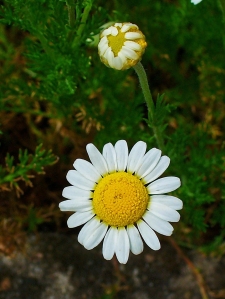
Common chamomile (Chamaemelum nobile) H. Zell – Own work, CC BY-SA 3.0, https://commons.wikimedia.org/w/index.php?curid=9482809
Chamomile
Also known as camomile
There are three native species of chamomile, all of which have white daisy-like flowers with yellow centres, finely divided feathery leaves and a strong aroma. Corn chamomile (Anthemis arvensis) which flowers May – July has a sweet scent, while stinking chamomile (A. cotula) flowers July- September and has more of a rank scent. Both commonly occur on arable land. Stinking chamomile is especially associated with heavy clay soils, and the presence of its seeds among charred cereal remains from archaeological sites has been used to infer agriculture on such soils. Its seeds can also remain dormant in the soil for a long time. Lawn chamomile or common chamomile (Chamaemelum nobile) is a fragrant low-growing perennial which grows in grassland and on sandy commons in southern England and south-west Ireland, and which flowers from July – August. The name chamomile derives from the Greek χαμαίμηλον, khamaimēlon, meaning ground apple, on account of the apple-like scent.
Common chamomile flowerheads make a herbal tea. They are picked when the petals start to turn down and then dried until papery. The plant is commonly recognised as a relaxant, although chamomile tea has also been used to treat coughs and colds.
In 2024, I am continuing to blog an A-Z compendium of human interactions with species in the British landscape. A list of references for information used in this series can be found here. An index of species covered so far can be found here.
Chalice-Moss
Cladonia chlorophaea (Floerke ex Sommerfeldt) Sprengel sensu lato
Also known as cup-moss, Our Lady’s chalice, pixie cups
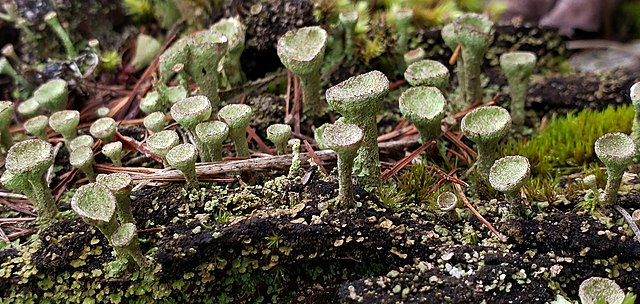
Cladonia chlorophaea by aarongunnar (CC-BY 4.0)
Not, in fact, a moss, but a group of species of lichen which grow on soil and rocks on shaded banks amongst moss. They resemble small greyish green cups. According to David Allen and Gabrielle Hatfield’s authoritative Medicinal Plants in Folk Tradition, they have been used until relatively recently in Wales as a remedy for whooping cough. In Waterford, Ireland, the plant had the same use when boiled in milk.
[An Archaeologist’s Guide to British Species]#86: Chafer
In 2024, I am continuing to blog an A-Z compendium of human interactions with species in the British landscape. A list of references for information used in this series can be found here. An index of species covered so far can be found here.
Chafer
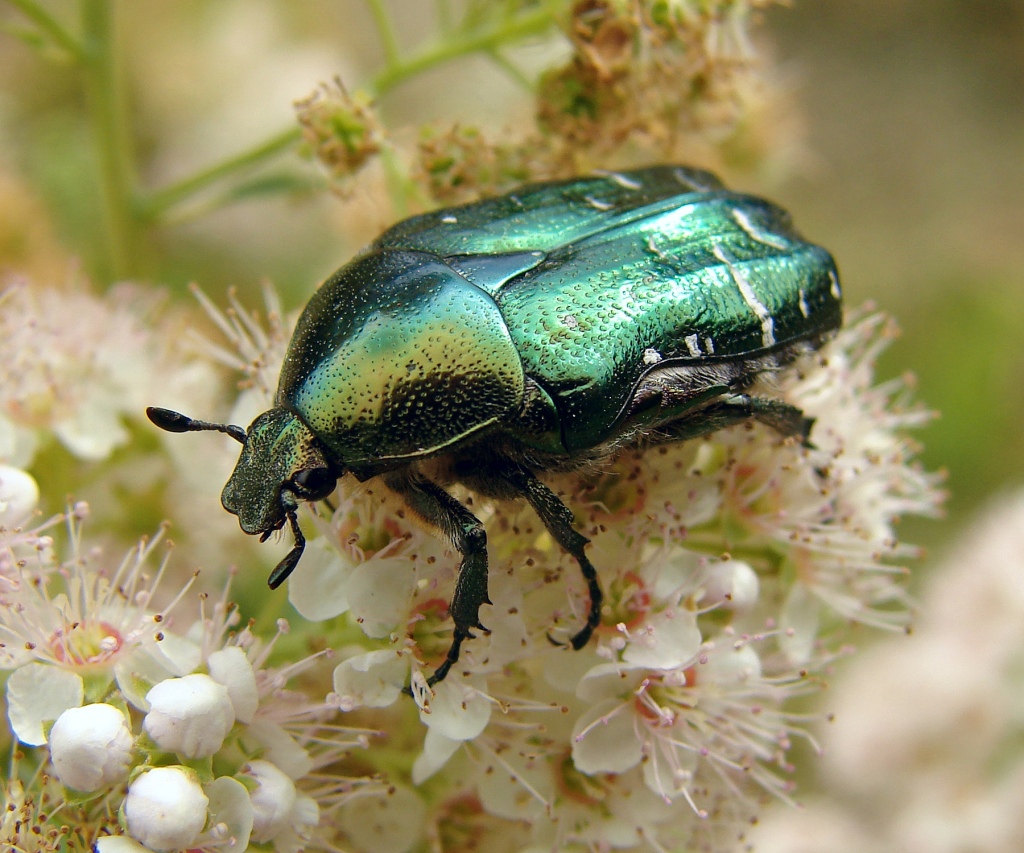
Green rose beetle (Cetonia aurata). Image by By I, Chrumps, CC BY-SA 3.0, https://commons.wikimedia.org/w/index.php?curid=2521547
The name chafer is applied to a number of beetles with fanlike antennae who emerge in May and June. The largest, and perhaps best known, is the cockchafer or maybug (Melolontha melolontha Linnaeus, 1758), whose subterranean-dwelling grubs have been considered a serious pest in agriculture. Both the grubs and the adult beetles have been eaten in western Europe. The iridescent green rose beetle or European rose chafer (Cetonia aurata (Linnaeus, 1758)) has been used medicinally. The adults of this species feed on a number of flowers, including hawthorn, elder, rose and dogwood, while the larvae feed on rotting wood in trees and decomposing vegetation.
[An Archaeologist’s Guide to British Species] #85: Celandine, Lesser
In 2024, I am continuing to blog an A-Z compendium of human interactions with species in the British landscape. A list of references for information used in this series can be found here. An index of species covered so far can be found here.
Celadine, Lesser
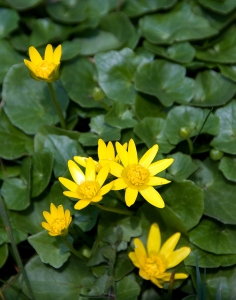
Lesser celandine flowers, by Michal Osmenda from Brussels, Belgium – https://www.flickr.com/photos/michalo/2425723494/ (CC BY-SA 2.0)
Ficaria verna Huds. (formerly Ranunculus ficaria L.)
A low growing perennial plant with fleshy, heart shaped dark green leaves and bright yellow flowers resembling their relative the buttercup. They are not closely related to greater celandine. The whole plant is toxic when raw, although the toxicity is neutralised by drying or cooking the plant. The tubers, or bulbils, of lesser celandine are edible when boiled and roasted, and have been consumed historically in Scotland. Roots and tubers can be harvested all year round, although they are largest and contain the most carbohydrates after flowering, which is from March to April. Charred root tubers, or bulbils, of lesser celandine were identified by the archaeobotanist Rosie Bishop and colleagues as a common component of the plant remains assemblage at the Mesolithic site of Northton on the Outer Hebridean island of Harris, and they were also present along with a cache of hazelnuts and crab apple pips in a pit dated to 6700 cal BCE at Staosnaig on Colonsay. Herbalists have used the plant to treat haemorrhoids.
In 2024, I am continuing to blog an A-Z compendium of human interactions with species in the British landscape. A list of references for information used in this series can be found here. An index of species covered so far can be found here.
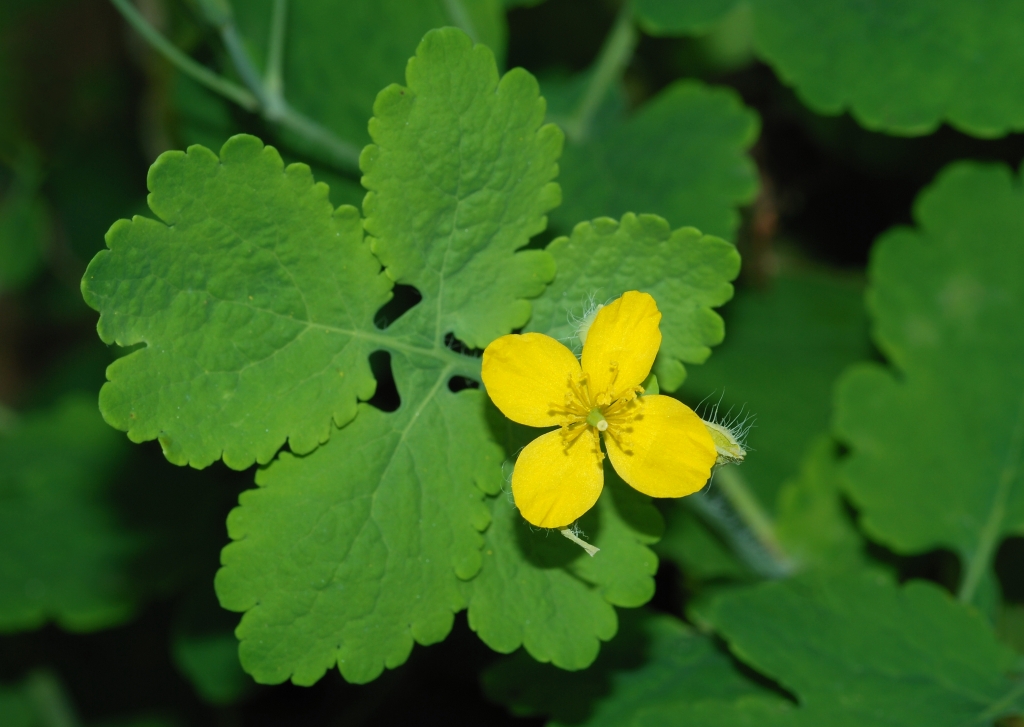
Greater celandine flower, by Alvesgaspar (CC BY-SA 3.0)
Celandine, Greater
Chelidonium majus
A perennial plant of woodlands with four-petalled yellow flowers that give way to long seed pods. The seeds within these have a lipid-rich appendage called an elaiosome which attracts ants, who help disperse the seeds by carrying them back to their nests where the elaiosome is fed to larvae and the seed discarded, a process known as myrmecochory.
If a stem is broken, it exudes a deep-orange latex, which contains toxic isoquinoline alkaloids. It also contains proteolytic enzymes. This was once used as a cure for warts and for sore eyes, and so the plant was occasionally cultivated. Remains of greater celandine were recovered from 16th/17th century deposits at Castle Street, Hull.
[An Archaeologist’s Guide to British Species] #83: Cedar
In 2023, I am continuing to blog an A-Z compendium of human interactions with species in the British landscape. A list of references for information used in this series can be found here. An index of species covered so far can be found here.
Cedar
Cedrus spp.
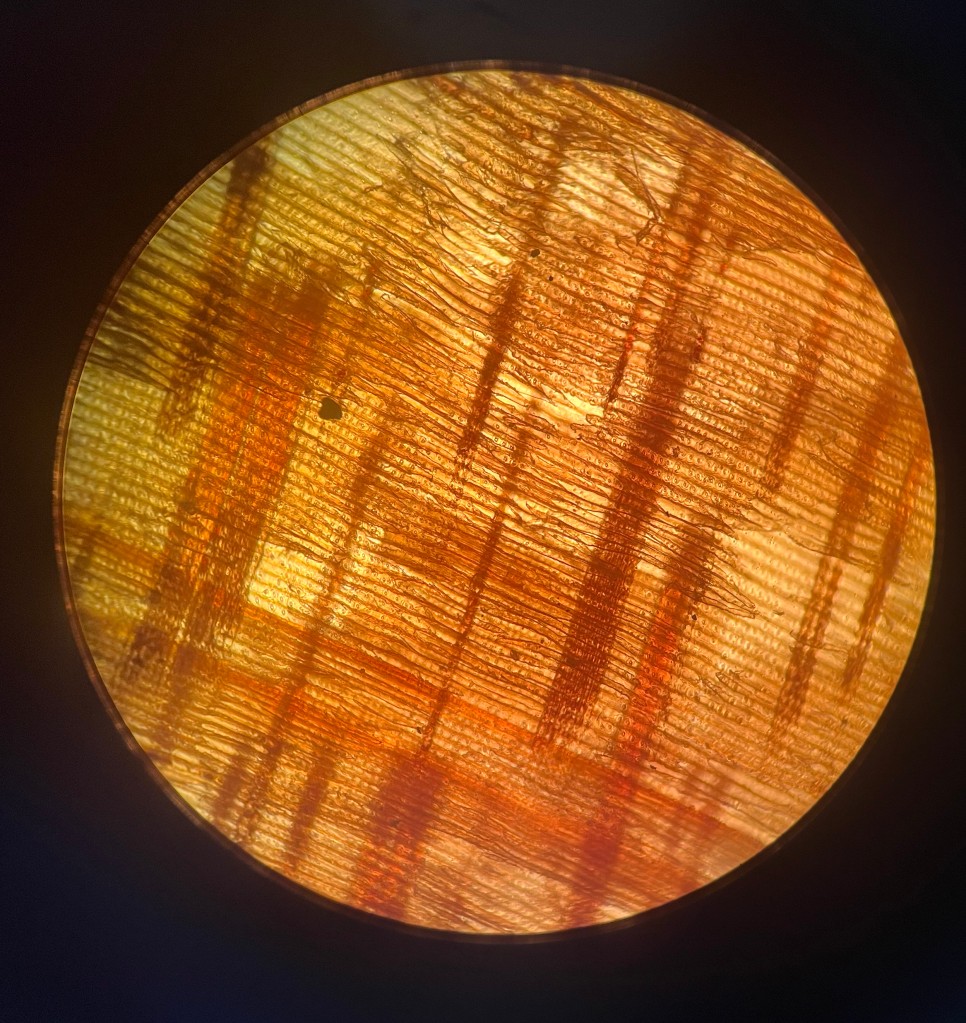
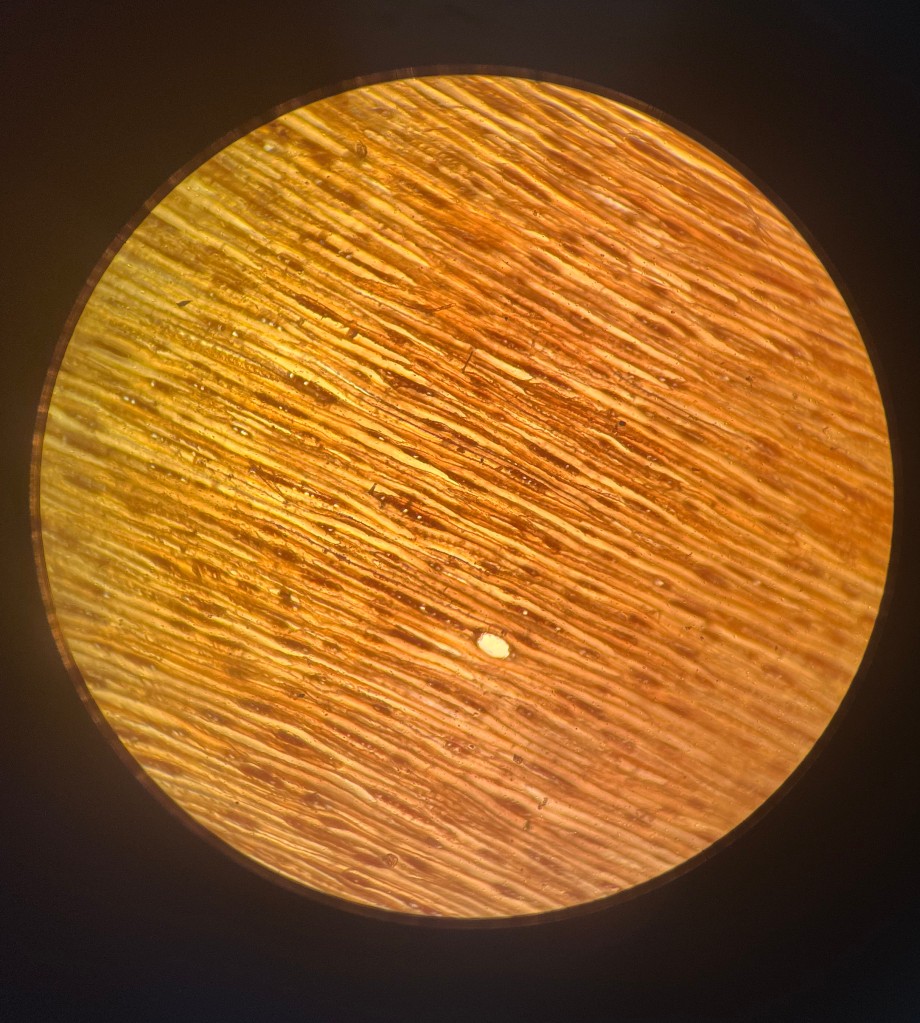
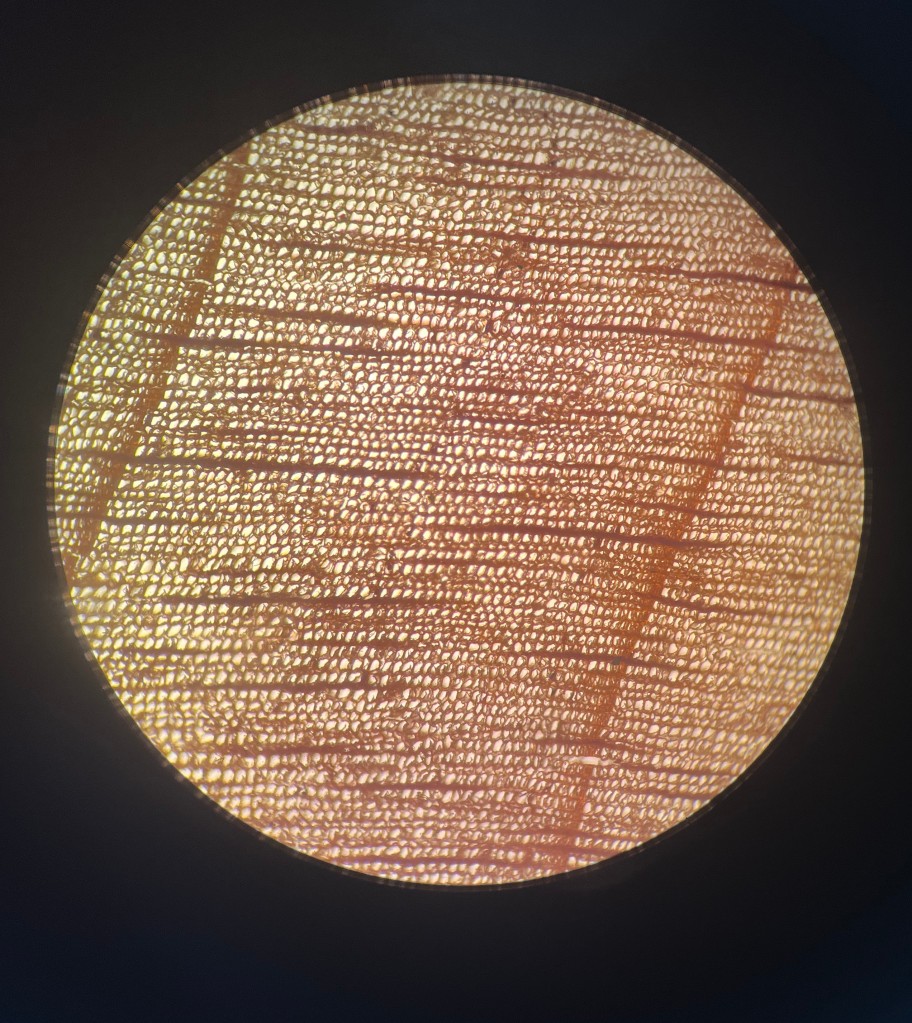
L-R: radial longitudinal, tangential longitudinal and transverse sections of cedar (Cedrus sp.) wood x100 magnification. Photos by M Law (CC-BY-SA 4.0)
Evergreen coniferous trees, cedars flower in early autumn, the male catkins having a distorted cone shape, and the female being even smaller soft green cones. These take two years to ripen into the broad, squat cedar cones. Atlas cedar (Cedrus atlantica) comes from the Atlas Mountains of Morocco, and has bluish foliage. Lebanon cedar (C. libani) grows in the mountains of Lebanon and Syria, and has been planted in Britain for around 400 years. Cedar wood is a rich brown in colour, and the wavy outline of its annual rings gives it an attractive grain.
Imported cedar wood is present in the Roman port of London, and other sites in London, as well as in Roman Carlisle. Cedar wood is similar to other coniferous woods, although at very high magnification (x1000) of the radial longitudinal section, pits known as tracheid pits can be seen to have distinctive scalloped edges.
[An Archaeologist’s Guide to British Species] #82: Catfish
In 2023, I am continuing to blog an A-Z compendium of human interactions with species in the British landscape. A list of references for information used in this series can be found here. An index of species covered so far can be found here.
Catfish
Siluris glanis
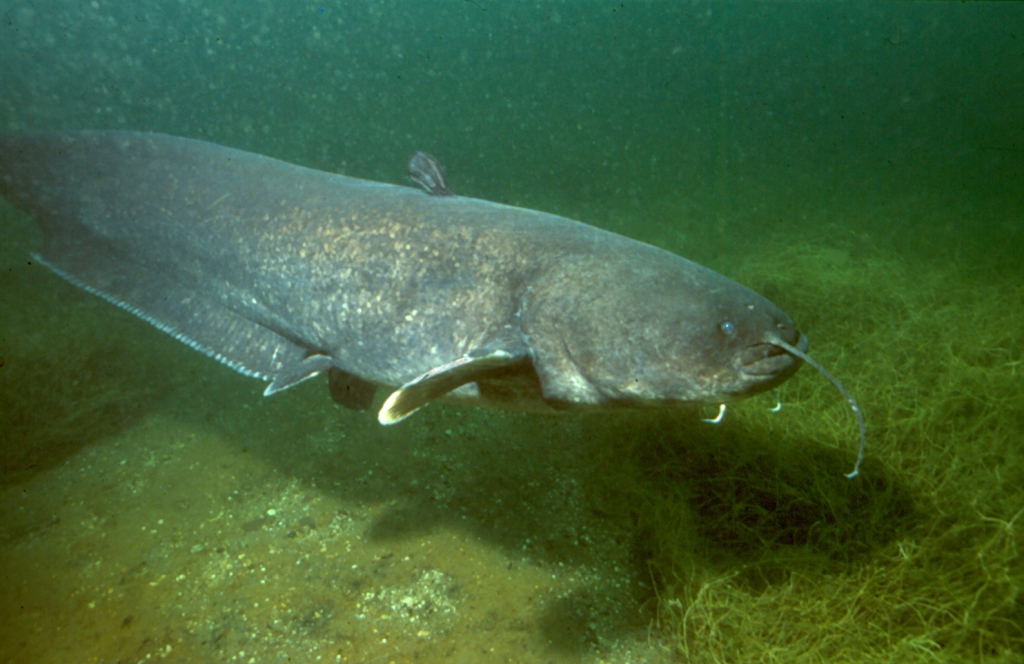
Siluris glanis. Image by Dieter Florian (CC BY_SA 3.0 de)
Also known as wels
A native of Central Europe, catfish were introduced as a sport fish to the lakes at Woburn Abbey, Bedfordshire in the early 1900s, and subsequently introduced to other lakes in Bedfordshire and Buckinghamshire, as well as the reservoir at Tring in Hertfordshire. Catfish are only eaten young, as adults may be fatty and can contain toxins through bioaccumulation. Catfish skin may be tanned and used like leather. When German forces occupied Norway in the 1940s, leather from animal hides was confiscated, and catfish skin was used as an alternative.
[An Archaeologist’s Guide to British Species] #81: Carrot, Wild
In 2023, I am continuing to blog an A-Z compendium of human interactions with species in the British landscape. A list of references for information used in this series can be found here. An index of species covered so far can be found here.
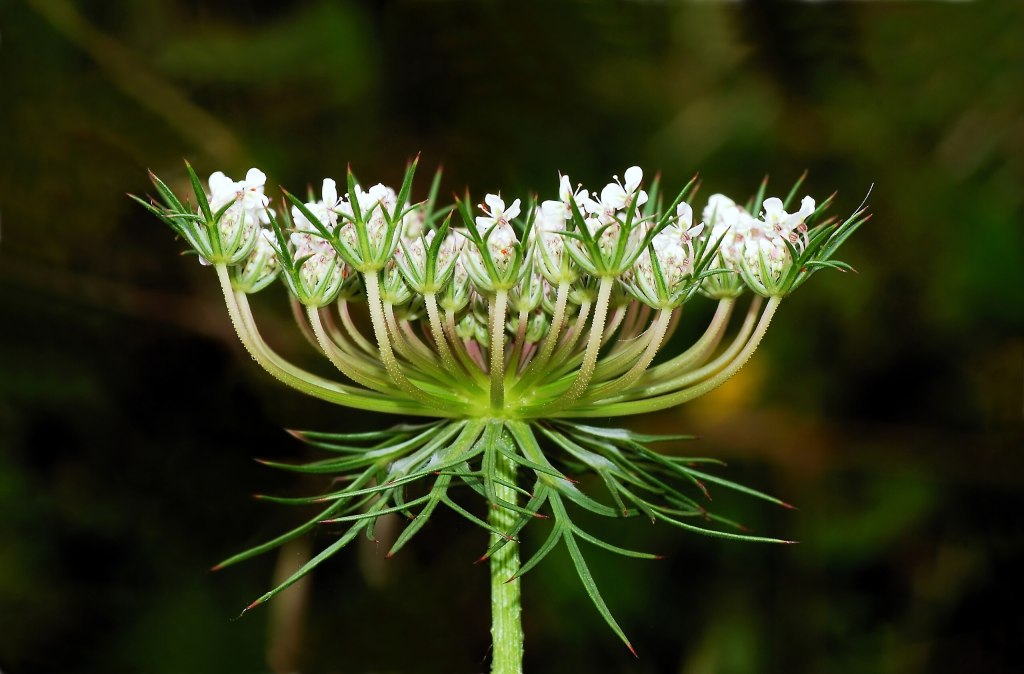
Umbel of Daucus carota. Image by Alvesgaspar – Own work (CC BY-SA 3.0)
Carrot, Wild
Daucus carota L.
Also known as Queen Anne’s Lace
A plant of grassy places where the soil is lime-rich, or by the sea. It has feathery leaves, and a flat topped white cluster of flowers. Its root is long and pale orange. In Somerset it was known as birds nest because the outer stalks of the flower head grow upwards and inwards after flowering to protect the spiky seeds.
Cultivated carrots – descended from the Mediterranean wild carrot D. sativus, became popular here from the Tudor period. The orange colour most commonly associated with modern carrots is due to the pigment carotene, a source of vitamin A. Carrots of this colour first arose in the Netherlands in the seventeenth century.
Wild carrot fruitlets have been widely used in folk medicine as a diuretic, while in the Highlands the mashed roots have been used as a poultice for wounds.
[An Archaeologist’s Guide to British Species] #80: Carp, Common
In 2023, I am continuing to blog an A-Z compendium of human interactions with species in the British landscape. A list of references for information used in this series can be found here. An index of species covered so far can be found here.
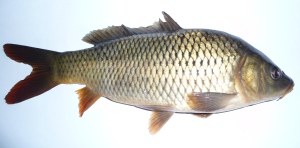
Common carp, image by George Chernilevsky – Own work (CC BY-SA 3.0)
Carp, Common
Cyprinus carpio Linneaus, 1758
A freshwater fish, native to Asia as far west as the Black Sea, but which was introduced to Britain from the medieval period, having begun to be introduced westwards across the continent during the Roman period. They are found in ponds, lakes, canals and slow-moving rivers, where they turn up the bed looking for food. They are tolerant of low oxygen levels, but are limited by a minimum spawning temperature of 18°C. Common carp commonly grow to 40-50cms, but larger specimens can occur. Carp have two characteristic pairs of barbels on their upper lip. Forms completely covered in scales are sometimes known as king carp, those with only a single line of scales as mirror carp, and those lacking scales as leather carp. They can live around 15 years in the wild, and over 40 in captivity. They were once a common food fish, and were stocked in ponds, but fell out of favour in Britain. There is a record of carp from a Roman site in Lincoln, however this identification has been questioned, and it is otherwise unknown from Britain before the 13th century.
In 2023, I am continuing to blog an A-Z compendium of human interactions with species in the British landscape. A list of references for information used in this series can be found here. An index of species covered so far can be found here.
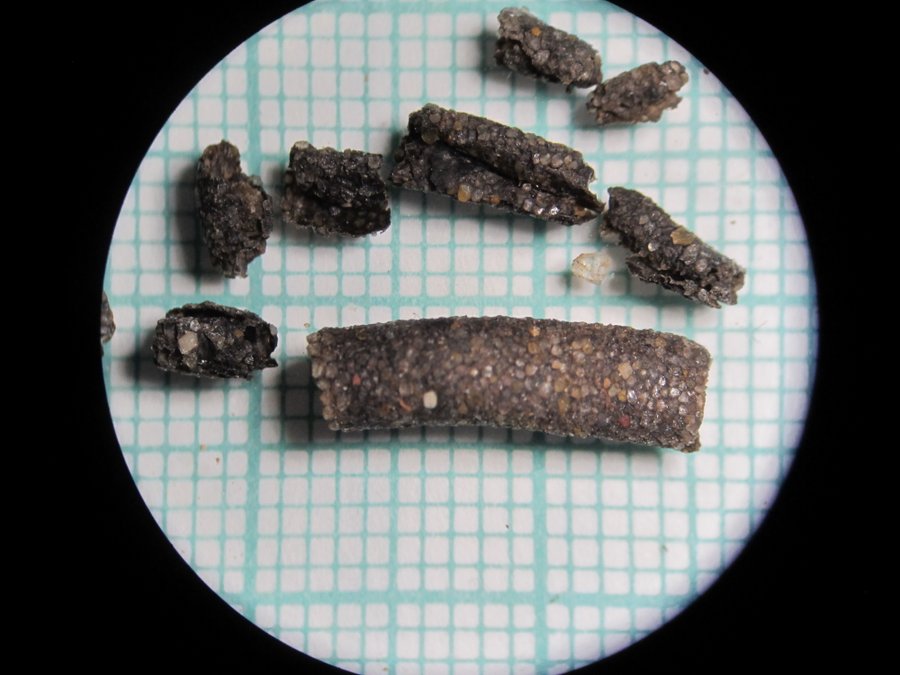
Trichoptera (Sericostomatidae) cases from an archaeological site at Leatherhead, Surrey, UK. Photo by Matthew Law (CC BY-SA 4.0)
Caddis Fly
There are around 190 species of caddis fly or Trichoptera in these islands. They are mostly nocturnal and resemble brownish moths. The larvae, which live in water, make tubes out of sand or bits of vegetation camouflaged with pieces of shell and stone. This trait gives the caddis fly its name – caddis man was a name for a pedlar who travelled the countryside with his clothes decorated with his wares.
Caddis fly larvae are preyed upon by fish, and some species are popular bait used by anglers. Their cases are sometimes preserved in archaeological sites, where they may be indicators of the presence of standing or flowing water